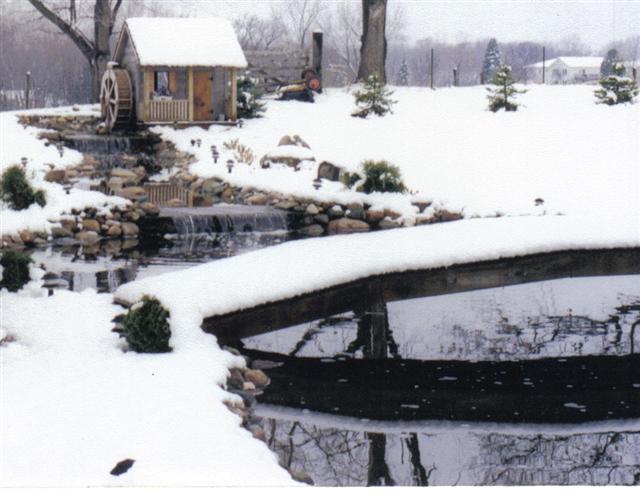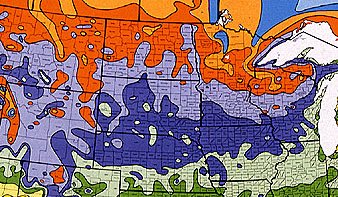| Koi in Winter | ||||||||||||
 | ||||||||||||
Koi are just Carp... Right?
| ||||||||||||
 How cold for how long?
How cold for how long?Bickal Koi Farm is located in Toddville Iowa in climate zone 4b. Average Annual Minimum Temperature Range of -20F to -25F. The southern half of Iowa is in zone 5a which can be 10 degrees warmer. Minnesota ranges from 4a to 3a! which can be 10 degrees colder The water temperatures drop below 50F around mid October and ice forms on the koi pond in early December. The ice doesn't melt off the koi pond until mid March. | ||||||||||||
|
Survive or Thrive? In order for a species to Survive, it must be able to reach sexual maturity and produce offspring. Typical breeding age for Koi is usually 3 years, altho I have had koi that have reached a larger size spawn at age 2. Certainly we want our koi to live longer than 3 years! | ||||||||||||
|
Nature does it best! Lets compare the conditions:
| ||||||||||||
|
Location, Location, Location! Koi being able to survive in your pond during the winter can really depend on the location of the pond. Ideally the pond should be in FULL sun during the winter months. Blocking the north-west wind will also improve your pond's temperature. | ||||||||||||
|
Let it Snow? Snow is good and bad. A snow cover will insulate your pond preventing heat from escaping, however the snow blocks sunlight from radiating heat to the pond. The lack of sunlight also inhibits algae growth which could cause ammonia levels to rise and ammonia kills koi fast. | ||||||||||||
|
My recommendations If heating your pond isn't an option, than I recommend bringing your koi indoors for the winter. You can enjoy your koi during the winter months and ensure that they remain heathly. Treating a sick koi is alot easier to do inside where its warm instead of outside under the ice in the pond. If you have no other options but to leave your koi outside, please follow these tips:
|

